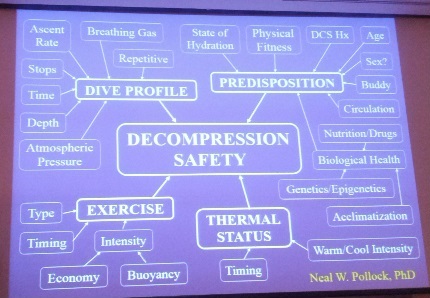Incorrect statement because you dont continuously record or measure VGE scores. These are recorded post dive making your statement and conclusion poor at best.
This is also funny coming from someone that used the words "imaginary bubbles" when references bubble models.
VPM's bubbles are imaginary. You cannot expect a correlation between real bubbles in your body and the bubble numbers in VPM. The reason is that VPM's bubble model is only a quite poor and uncalibrated approximation of the mechanisms that cause real bubbles in the human body.
Why do you think there's a problem with measuring VGE post dive vs modeling post dive? VGE tend to peak post-dive while tissues are off-gasing, as there's also a delay between the dive and DCS symptoms.
Having too many bubbles post-dive will also slow down off-gasing of tissues. All of that is important for decompression but missing in VPM. There are better probabilistic models such as Thalmann's LE that avoid a physical bubble model but consider these effects of bubbles and can also predict the time delay quite well.





